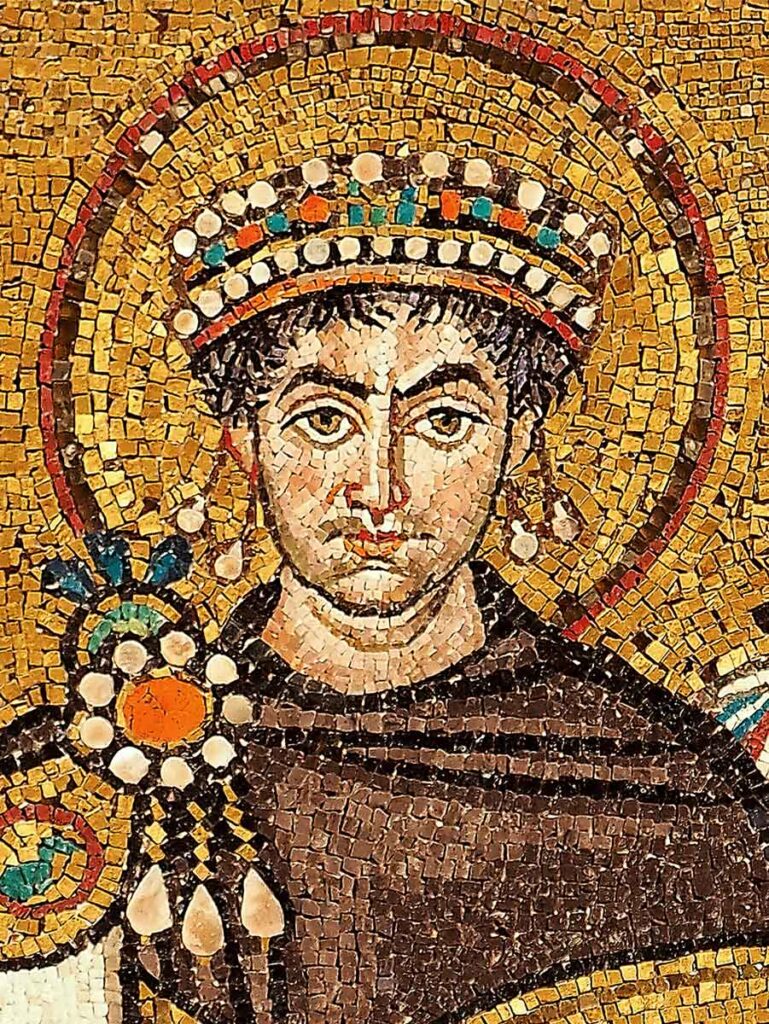Tyrian purple is an ancient dye, famous for its rich purple hue. It is one of the oldest and most valuable dyes in history and is extracted from several species of marine mollusks belonging to the Muricidae family.
Although today we have a wide palette of colors at our disposal thanks to modern technologies, in ancient times, obtaining and producing certain pigments was a feat. In this article we are going to tell you all the details about this majestic color.
How was Tyrian Purple obtained?

The name “Tyrian purple” comes from the city of Tyre, located in present-day Lebanon. This coastal city was an epicenter in the production of this dye, thanks to a particular species of mollusk, the Murex. The dye was obtained through the gland of these mollusks, a process that required thousands of them to produce a small amount of dye. Due to this laborious procedure, and the fact that the mollusks were becoming increasingly scarce due to overexploitation, Tyrian purple acquired an exorbitant value.
The production process involved collecting these mollusks, extracting the precious secretion and then exposing it to air and light, which allowed the colorless liquid to transform into a purple pigment. The variation in shade depended on factors such as exposure time and the particularities of the process, making each batch unique.
Tyrian Purple Symbolism

More than just a dye, Tyrian purple became a symbol of power, wealth and status. In various ancient cultures, wearing clothes dyed with this pigment was a privilege reserved for the elite.
Don't miss our ultimate guide on graphic design!
Discover the best online courses, master's degrees, and university programs for a successful career in design with our "Ultimate Guide to Studying Graphic Design: The Best Options for a Successful Career". Shape your future in the creative industry today.View Post Read Later
It was used mainly in the Mediterranean basin, and its use spread to several ancient civilizations due to its value and associated prestige. These are some of the civilizations and contexts in which Tyrian purple was used:
- Phoenicians: The city of Tyre, located in the region that is now Lebanon, was the epicenter of Tyrian purple production. The Phoenicians, famous for their commercial and maritime skills, spread and marketed this precious dye throughout the Mediterranean.
- Greeks: In ancient Greece, Tyrian purple was used to dye the garments of the nobility and people of high status. It was also used for ceremonial and religious occasions.
- Romans: In ancient Rome, this dye acquired a special status, reserved for the elite. The toga praetexta, for example, was a garment edged with purple worn by magistrates. Later, the purple toga (toga picta) became a specific garment of the emperors. In fact, over time, sumptuary laws restricted the use of this color to the imperial family and certain high dignitaries.
- Jews: In Judaism, Tyrian purple, known as“argaman” in Hebrew, was one of the dyes used in the tabernacle and in the Temple of Jerusalem, dyeing fabrics and curtains. It was also used for the garments of the high priests.
- Byzantine: The Byzantine Empire, heir to the Roman Empire in the east, continued to value Tyrian purple as an imperial color. In fact, Byzantine emperors were often called“purple-born” or Porphyrogenet.
Decline of its use
With the fall of the ancient empires and the rise of Christianity, Tyrian purple gradually disappeared. The costly and laborious production process, together with the overexploitation of mollusks, made this dye increasingly rare. This was compounded by the discovery and popularization of other dyes and production methods, which relegated Tyrian purple to oblivion.
Nevertheless, its legacy lives on. The word “purple” in many languages conjures up images of royalty and luxury. Although the exact formula and production techniques for Tyrian purple have been lost to time, the fascination with this color has not waned.
Today, thanks to archaeological and chemical research, attempts have been made to recreate this iconic pigment, though never with the accuracy and splendor of the original. Tyrian purple serves as a reminder of an era when color could be as valuable as gold, and of the ability of ancient civilizations to transform natural resources into works of art.
Tyrian Purple Color Code

Although you cannot obtain Tyrian purple in digital media, we will provide approximate color codes for those who want to include this color in their designs.
| Color System | Color Code |
| HTML | #7B236D |
| RGB | R 123, G 35 , B 109 |
| CMYK | C 58, M 100, Y 26, K 10 |
| HSV | H 310°, S 72% , V 48%, V 48% ,H 310°, S 72% , V 48% |


